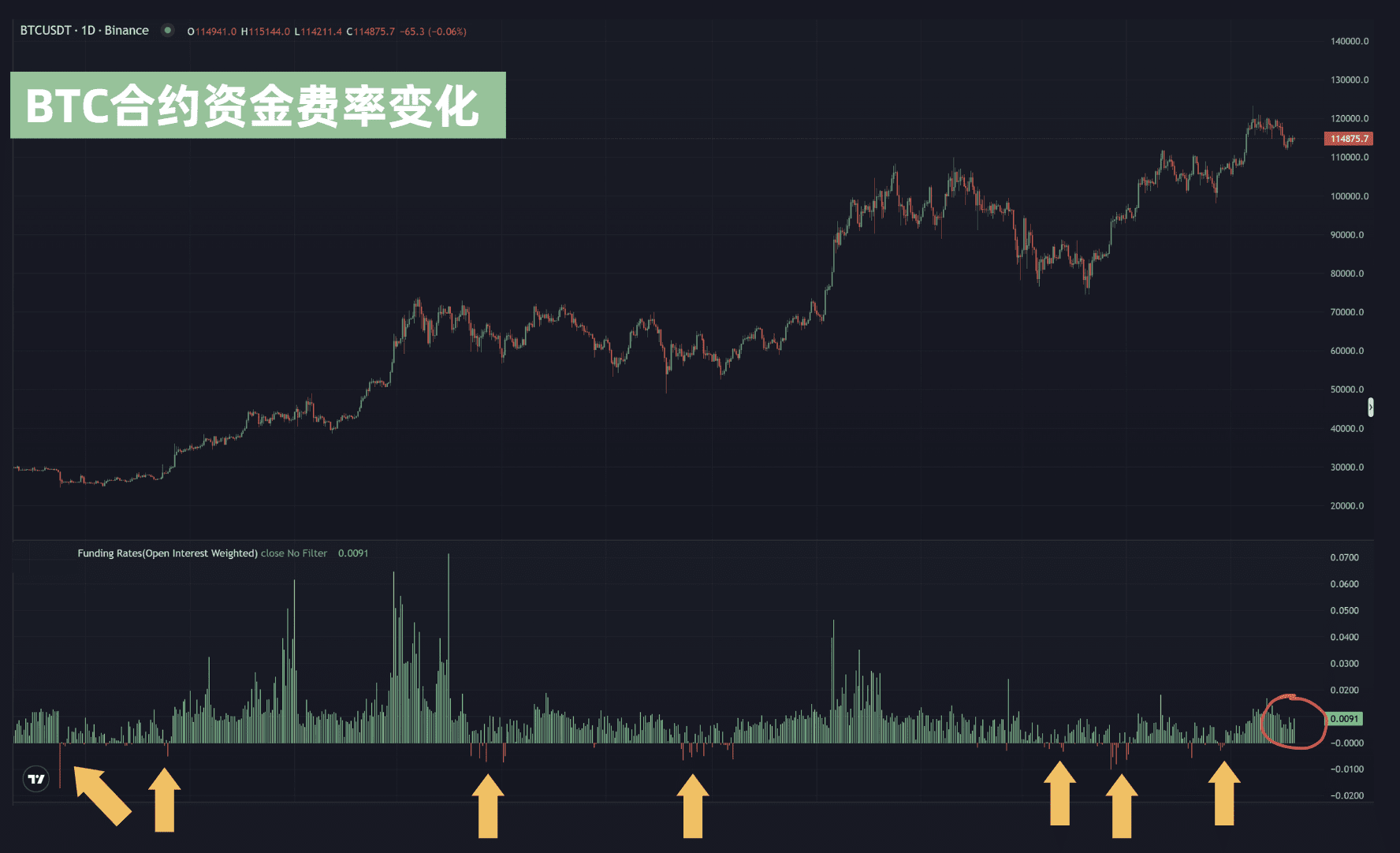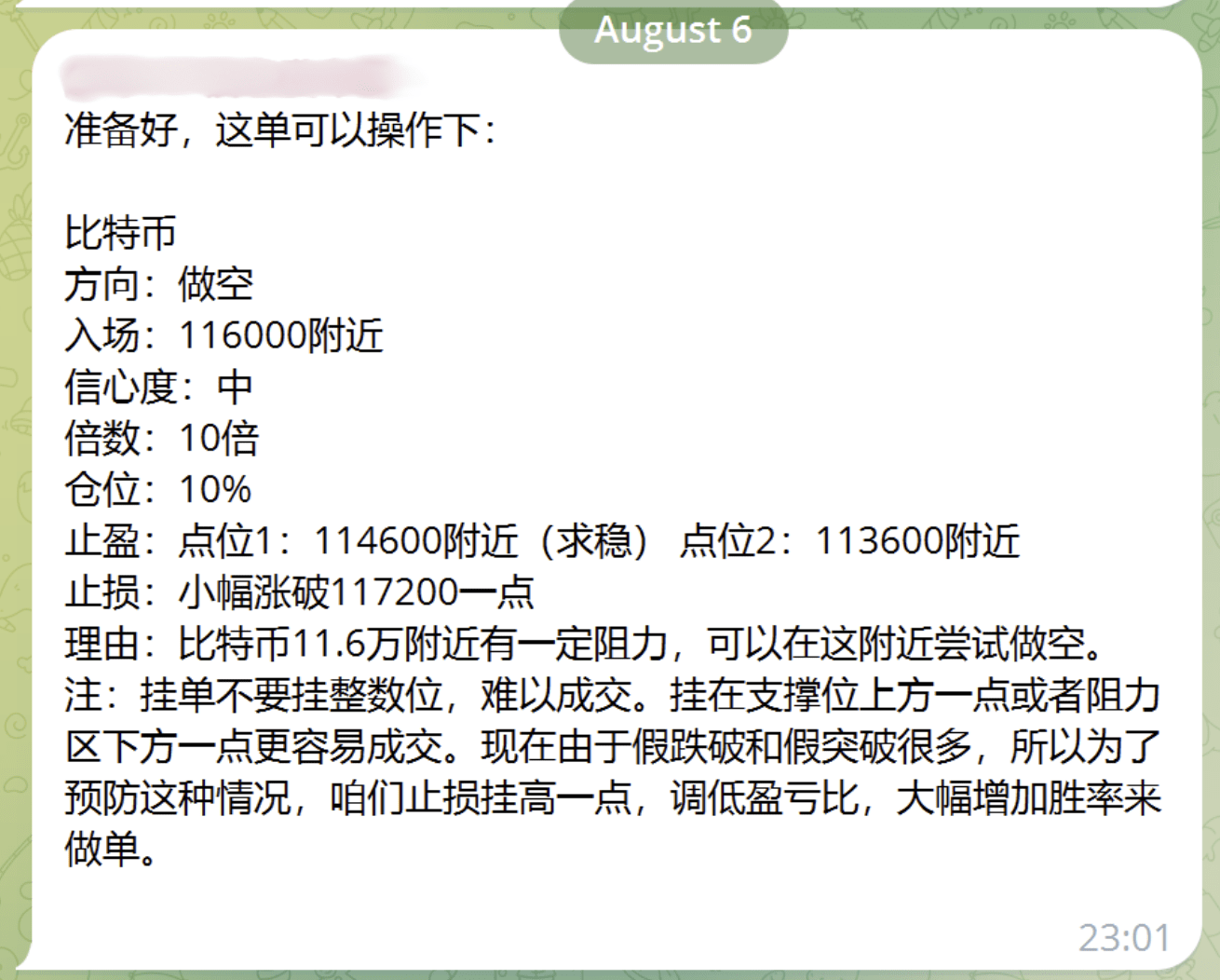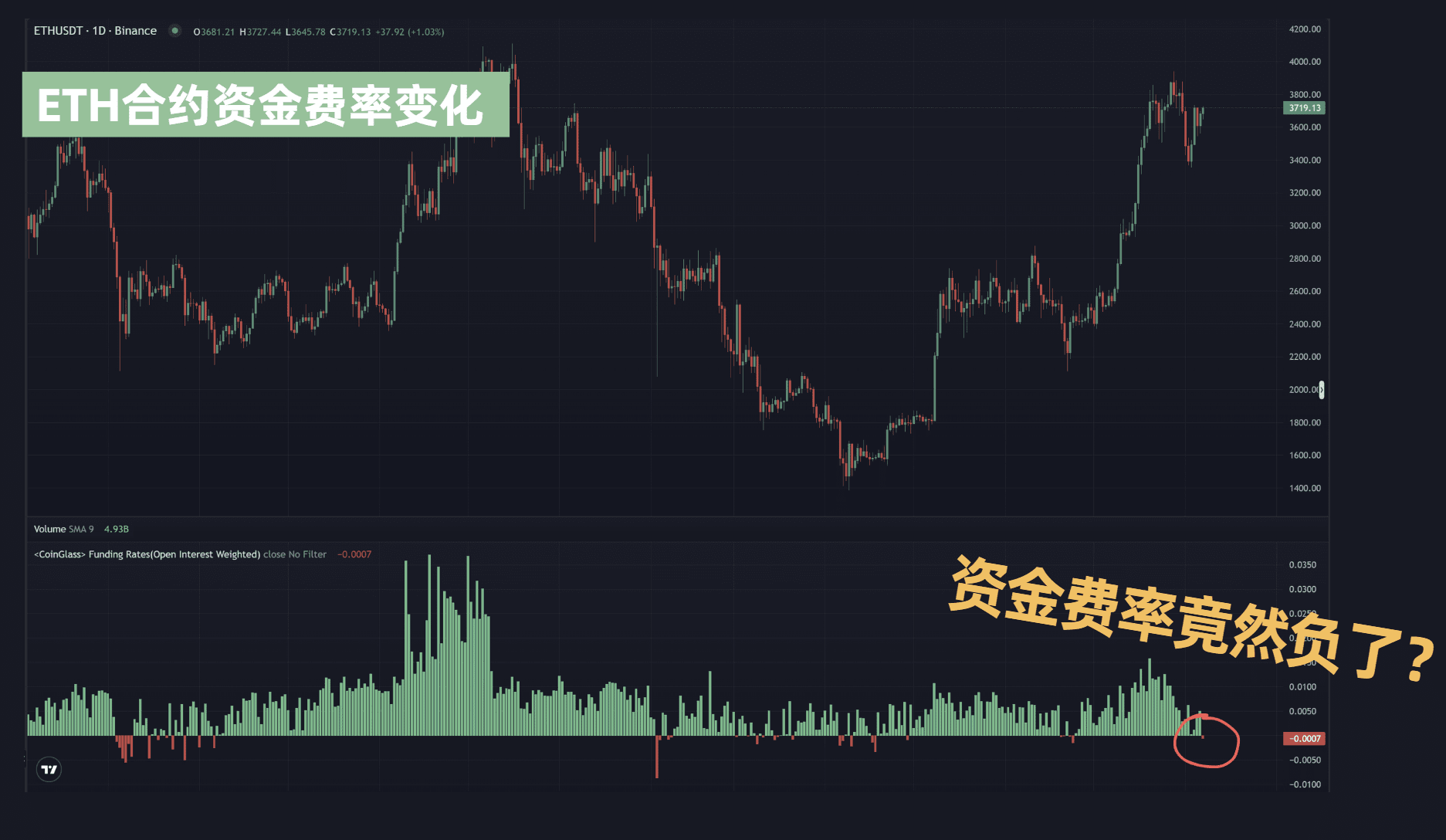First, let's talk about BTC: As shown in the chart, the funding rate for Bitcoin contracts has skyrocketed, which is not a bottom signal. A higher funding rate actually makes it more likely to pull back. The bottom is indicated in the chart, where the funding rate turns positive and shorts are rampant; that is when we reach the bottom, and aggressive buying will follow.

Currently, Bitcoin is still consolidating after a sharp decline, adapting to a new range. In the short term, we shorted at 116,000 twice; the first drop was to 112,700, and the second drop was to 114,300, both reaching our take-profit levels. I think we can try to short again near 116,000, and this time there might even be a false breakout at 116,000 to lure in longs. We will keep a close watch and open positions in real-time.

Ethereum, on the other hand, is much stronger because its funding rate is very low and even turned positive, indicating an overflow of shorts. In such situations, it becomes harder to decline, and it might even rise. Previously, when the funding rate turned positive, there were significant rebounds.
Therefore, the logic of price fluctuations in the crypto world is not difficult, as it is a zero-sum game. When longs are crowded, market makers will push prices down, leading to a death spiral for longs. Conversely, if there are many shorts, institutions will go long, and the shorts will become fuel, causing a short squeeze. You can clearly see this from past funding rates and price trends.

But 90% of retail investors do not understand this, and many do not even know what the funding rate is. Therefore, the rise and fall of coin prices appear random to some newcomers, with operations entirely relying on emotions and luck. It would be strange to make a profit. Shuqin hopes everyone learns a little every day, gradually grows, from understanding the market makers to joining them, and ultimately becoming one. Is that okay!

